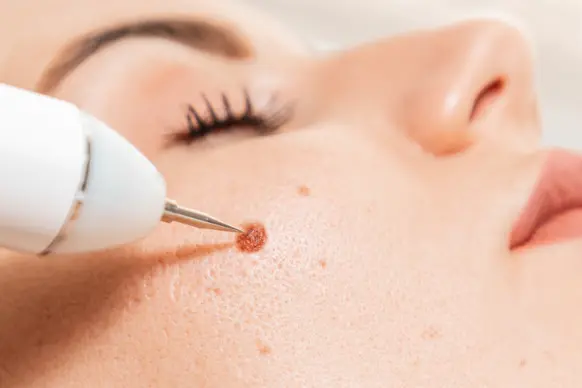Mole And Warts Removals
What is Moles and Warts Removal?
Warts are small, fleshy bumps on the skin or mucous membranes caused by various strains of human papillomavirus (HPV). They can grow anywhere on the body, including the hands, feet, and genitals. Although most warts go away on their own within months or years, some may need to be removed due to discomfort, cosmetic reasons, or the risk of spreading.
Moles, on the other hand, are usually harmless, but some may become cancerous over time. It's important to monitor any changes in a mole's size, shape, or color. Both moles and warts can be removed through various medical treatments.
Available Treatments for Moles and Warts
-
Freezing Treatment: Concentrated cold air, usually a mixture of dimethyl ether and propane, is sprayed onto the wart to kill the skin, allowing the wart to be scraped away. However, this may not completely remove all warts.
-
Cryotherapy: Liquid nitrogen is applied to the wart with a cotton swab, which leads to blistering that fades over time. This is a more effective option for removing stubborn warts.
-
Surgery: For warts or moles that do not respond to other treatments, surgical removal may be recommended. This could involve cutting away the wart or mole or using electricity to burn it off. Surgery can result in scarring and requires local anesthesia.

Need Help
Frequently Asked Questions
Here are some frequently asked questions about mole and wart removal and their treatment options.
1. Can moles be cancerous?
Yes, while most moles are harmless, some can become cancerous over time. A common mole rarely turns into melanoma, but people with more than 50 moles have a higher risk of developing melanoma, the most serious type of skin cancer.
2. What are the causes of warts?
Warts are caused by the human papillomavirus (HPV), which leads to an excess production of keratin in the skin. This creates the rough texture of a wart. Warts can be spread by direct contact with the wart or through broken skin.
3. What methods are used to remove warts and moles?
Methods include freezing (cryotherapy), stronger peeling medicine (salicylic acid), minor surgery, and laser treatments. Your doctor will recommend the best option based on the size, type, and location of the mole or wart.
4. Does removing a mole lead to scarring?
Yes, surgically removing a mole will likely result in a scar. However, the size of the scar depends on factors such as the mole's location and size, your age, and the type of surgery performed.
5. Can warts be treated with non-surgical procedures?
Yes, common warts can often be treated with home remedies like salicylic acid patches, ointments, and liquids. However, persistent or large warts may require stronger treatments like cryotherapy or minor surgery.
6. How can I prevent warts from spreading?
To prevent spreading warts, avoid scratching or picking at them, keep them dry, and avoid shaving over the wart. Regular hand washing and disinfecting cuts can also help prevent the virus from spreading to others.
What Our Clients Say
Contact Us
Send A Message
If you want to ask anything just fill in the form below and send us.
